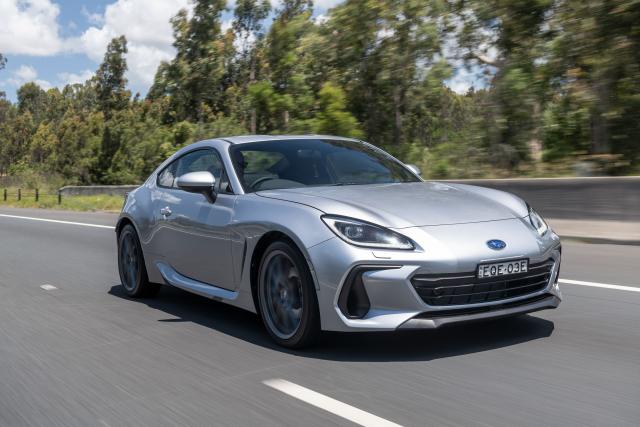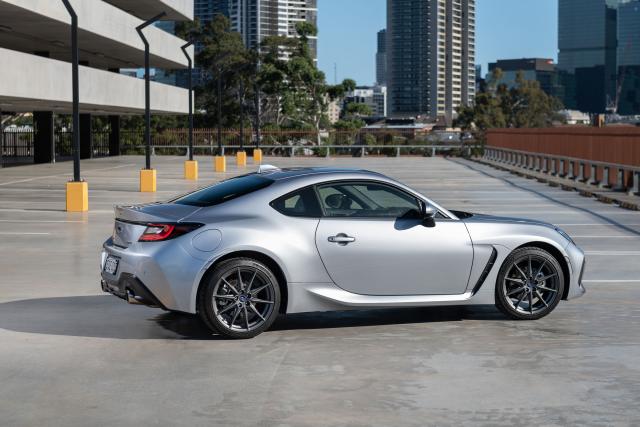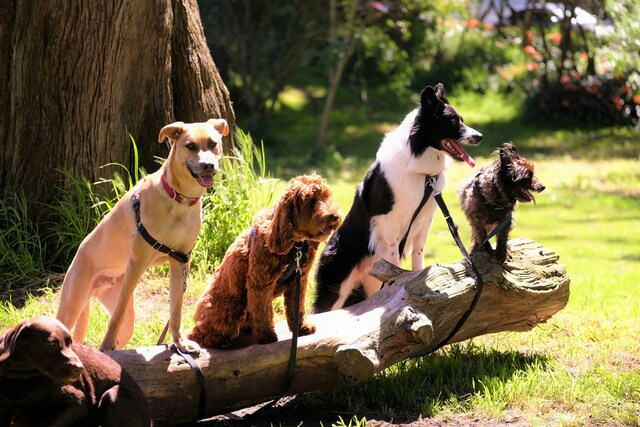Subaru WRX, often tagged as the “Rex”, is high-performance machine that’s been a longtime favourite with Australian drivers since it first arrived Downunder in 1994. The latest model is offered as a sedan and station wagon. It comes in four variants: base, RS, GT and tS, and two engine/transmission combinations.
Our test car was the GT Sportwagon and we thoroughly enjoyed our week’s road test as it operates in all conditions in the country or the city with not only stunning performance but quite good comfort that makes it suited to family transport as well as a semi-track machine if you want to take to a driver’s day at a racing facility near you.
Subaru service intervals for the latest WRX are now at 12 months/15,000 km. Up from the six months/12,500 km on the previous models.
STYLING
Pumped up guards and the air intake that sits on the top of the bonnet – thankfully not underneath and out of sight as was stupidly tried a few years back.
Cladding garnishes that run all the way around the car are finished in a honeycomb texture and are said to minimise the disruption of air around the vehicle and therefore improving stability.
INTERIOR
The second row is reasonably spacious and comfortable thanks to the increased size of the new model compared to the previous WRXs. Subaru claims there’s increased space in the back thanks to its slightly larger dimensions over the outgoing model.
As is often the way they are better suited to two people than three. Unless the driver is very tall and/or likes their seat set well back in which case the person behind them might find legroom is fairly tight.
WRX Sportswagon 492 litres of cargo space with all seats in use. This increases to 909 litres with the second-row seats folded down in 40:20:40. There’s a temporary spare wheel under the boot floor
INFOTAINMENT
WRX’s infotainment system is controlled through a portrait 11.6-inch touchscreen that’s easy to see and use.
You can use voice commands to operate the system but, as is too often the way, they don’t always get the message correctly.
A six-speaker sound system is standard in the lower cost models. The WRX RS and tS sedan models have a a premium 10-speaker Harman/Kardon setup. We certainly enjoyed the quality of sound in our test car.
ENGINES / TRANSMISSIONS
The engine is a 2.4-litre flat-four ‘boxer’ unit and drives through all four wheels by way of a six-speed manual or a continuously variable automatic transmission.
In CVT models a variable torque distribution centre differential has a nominal split of 45:55 biased towards to the rear wheels. The split can be altered depending on drive modes selected, with the WRX’s Sport settings have a rear-wheel bias.
SAFETY
Airbags cover both rows of occupants and there are IsoFix child seat mounts on the outboard rear seats.
Standard features across the complete range include blind-spot monitoring, rear cross-traffic alert, lane-change assist and a rear-view camera.
For some odd reason those with a manual gearbox don’t have autonomous emergency braking and emergency steering. We feel this may come in the future as Subaru has long had an emphasis on safety.
DRIVING
The new 2.4-litre turbo-petrol four-cylinder engine is pretty linear in its delivery and is delightful to sit behind. It’s happy to rev to close to its redline but we found it better to change a couple of hundred revs lower because it still drivers plenty of punch thank to the wide torque spread.
Subaru says the WRX will use 9.9 litres per 100 kilometres of 95 RON petrol on the combined cycle. We averaged between nine and eleven litres per hundred around town and in the suburbs. This dropped to six to seven litres on easy paced country running. If you want to have a fang in the country – and of course you do! – it’s not too bad at nine to ten litres.
Thanks to its four-wheel drive system the WRX Sportwagon is exceptional in its cornering. The chassis is nicely balanced and the steering wheel offers good feedback.
Analogue dials with a relatively small driver-display screen which can toggle through various driving data as well as route guidance.
SUMMING UP
With its affordable price and sharp performance the Subaru WRX has been a favourite of Australian drivers for more than two decades. This latest version is unlikely to dampen our enthusiasm one little bit.
AT A GLANCE
MODEL RANGE
WRX sedan: $44,990 (manual), $48,990 (automatic)
WRX RS sedan: $50,490 (manual), $54,490 (automatic)
WRX tS sedan: $56,990 (automatic)
WRX Sportswagon: $49,990 (automatic)
WRX GT Sportswagon: $55,490 (automatic)
WRX tS Sportswagon: $57,990 (automatic)
Note: These prices do not include government or dealer delivery charges. Contact your local Subaru dealer for drive-away prices.









